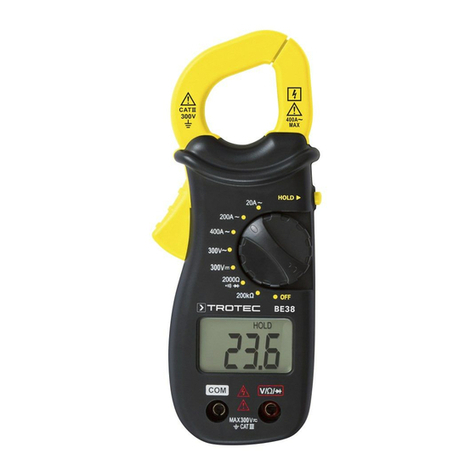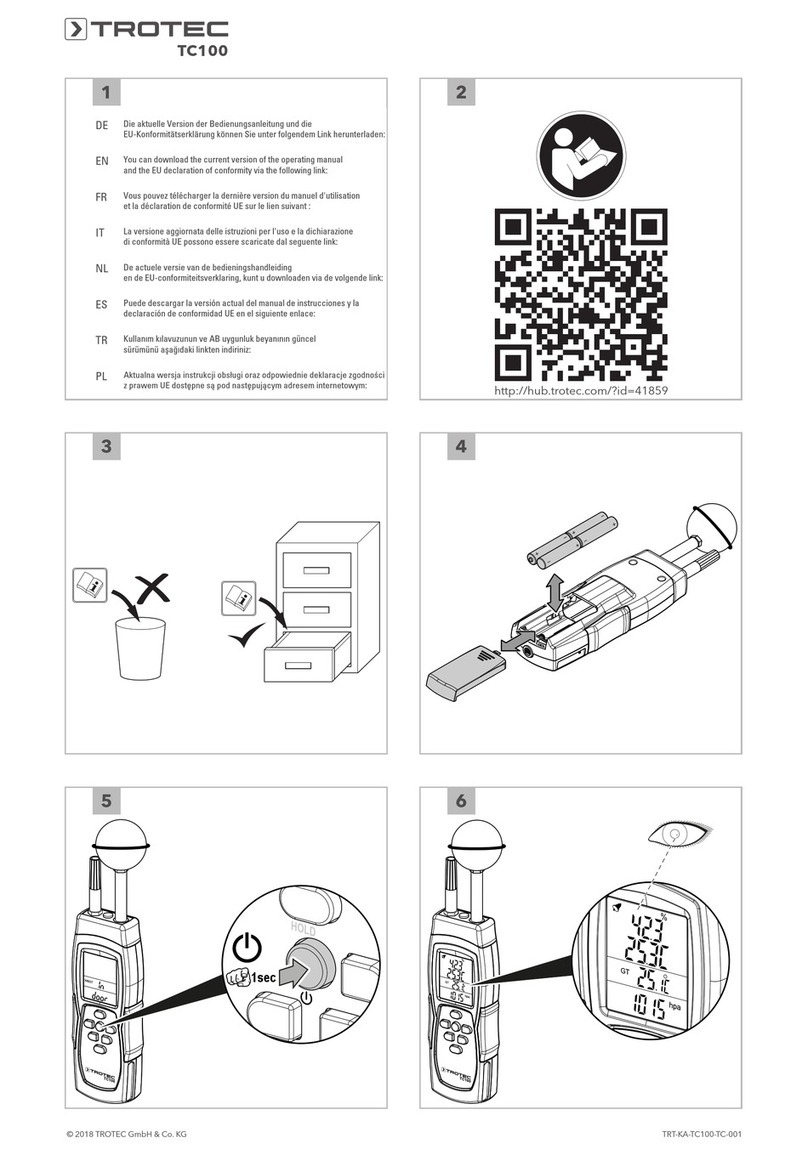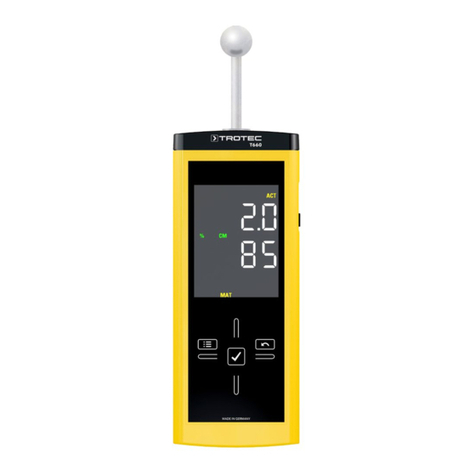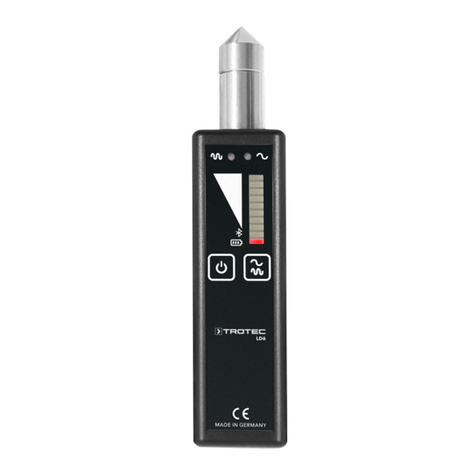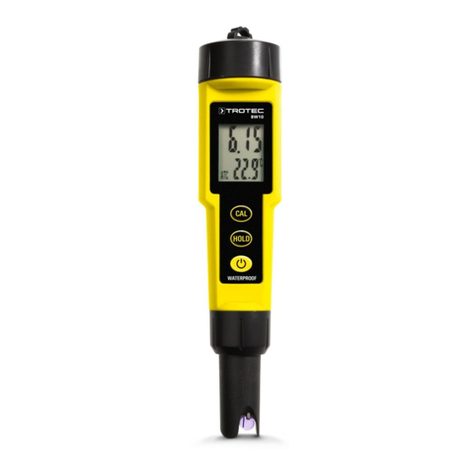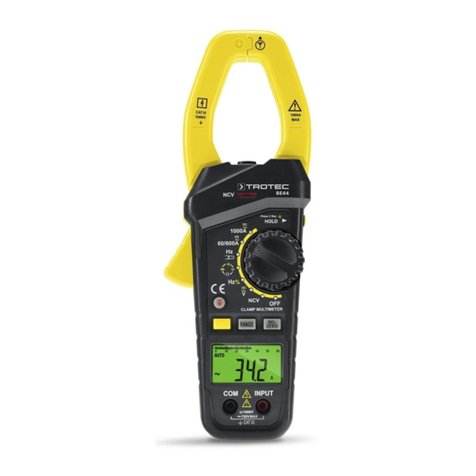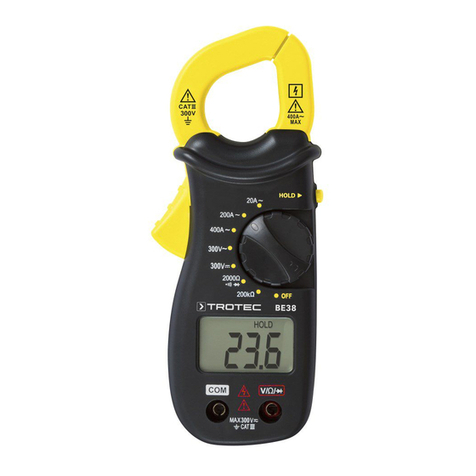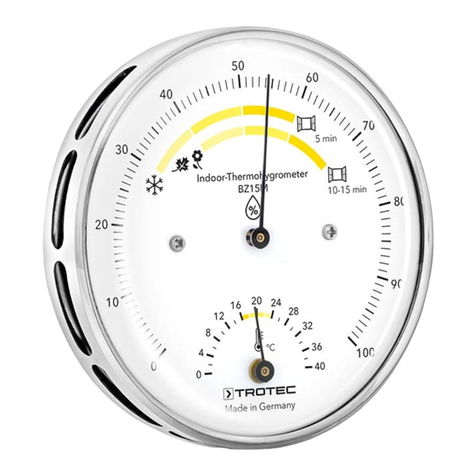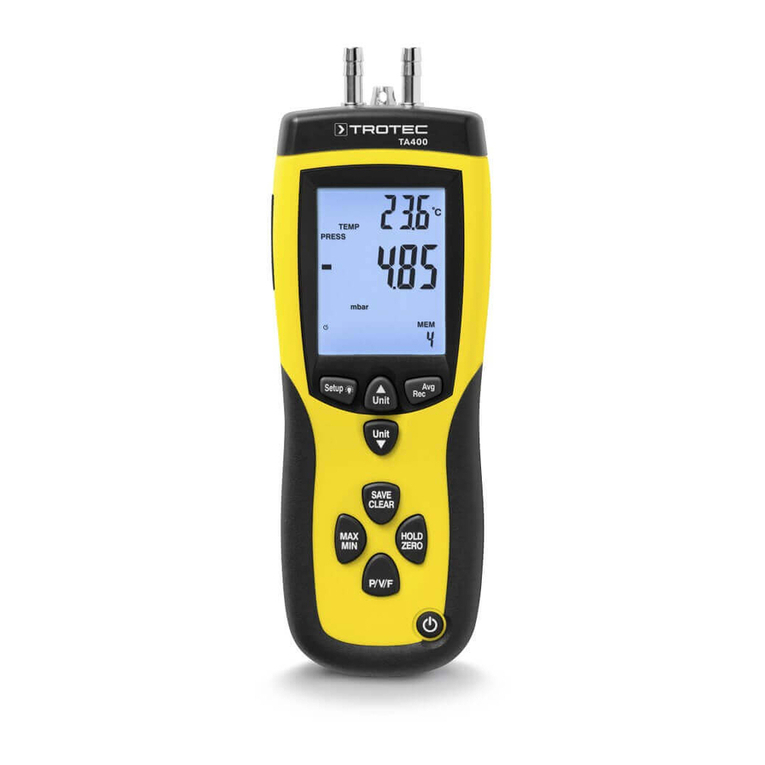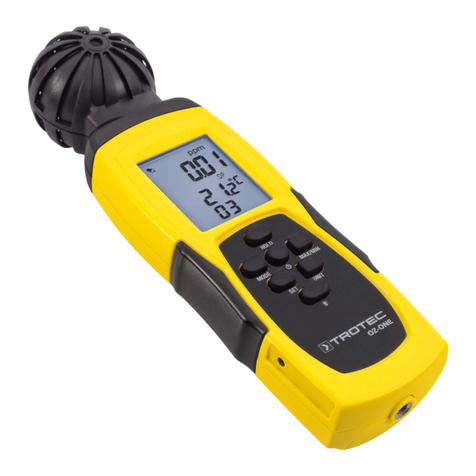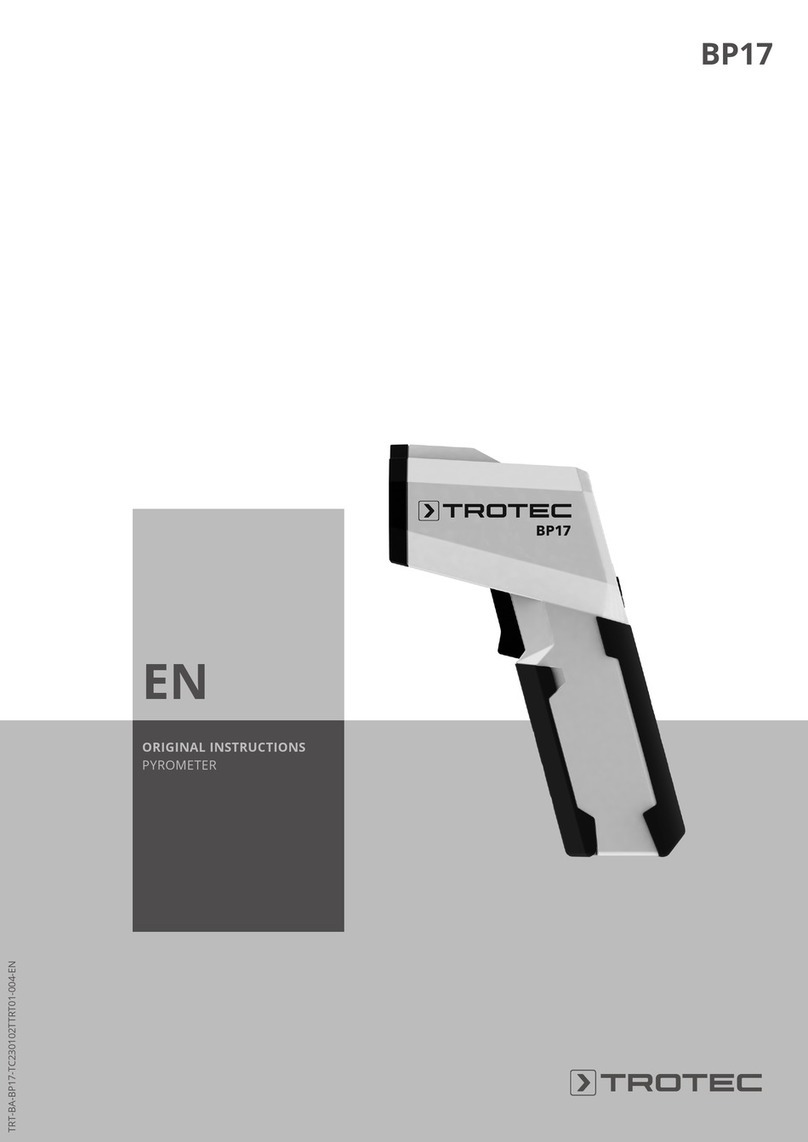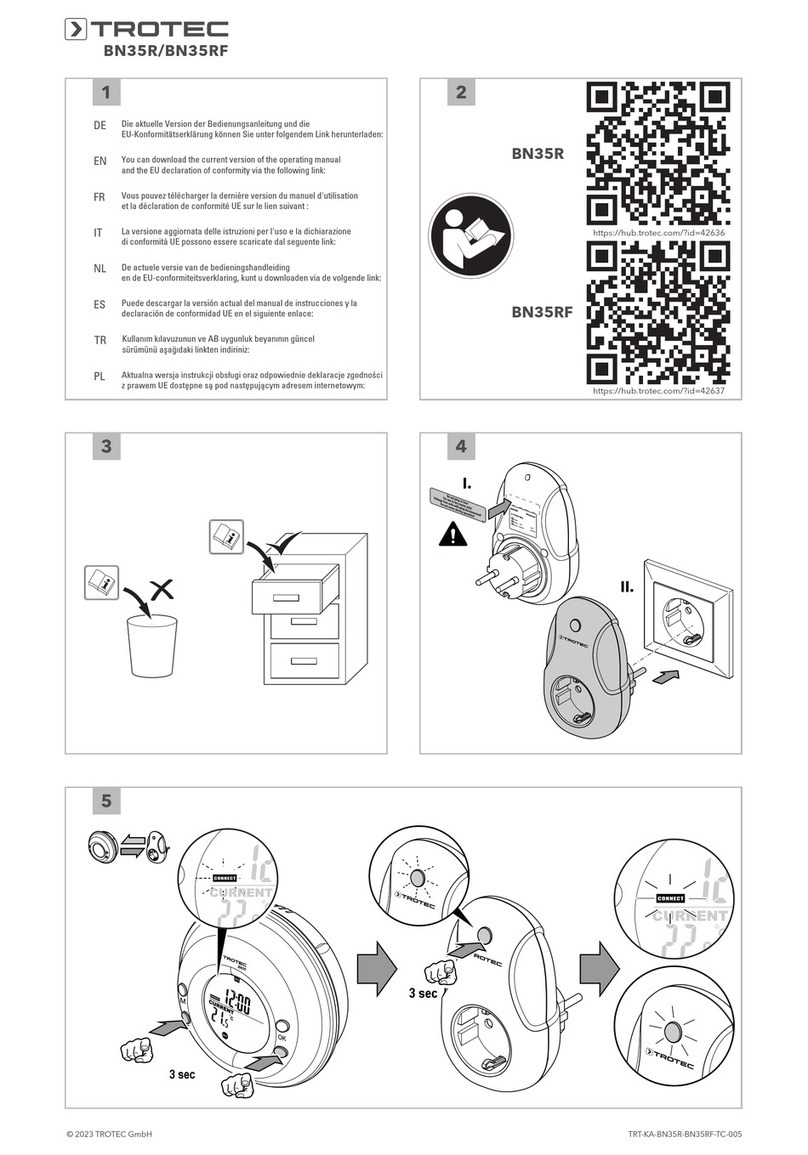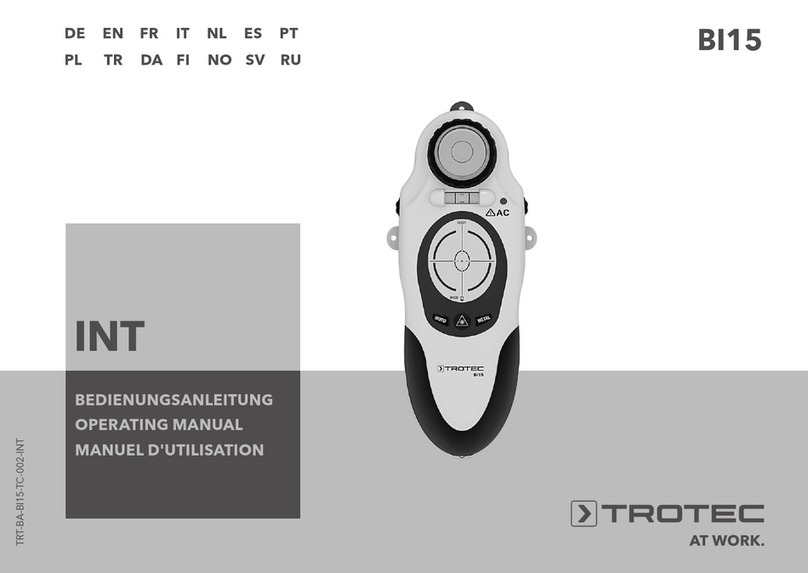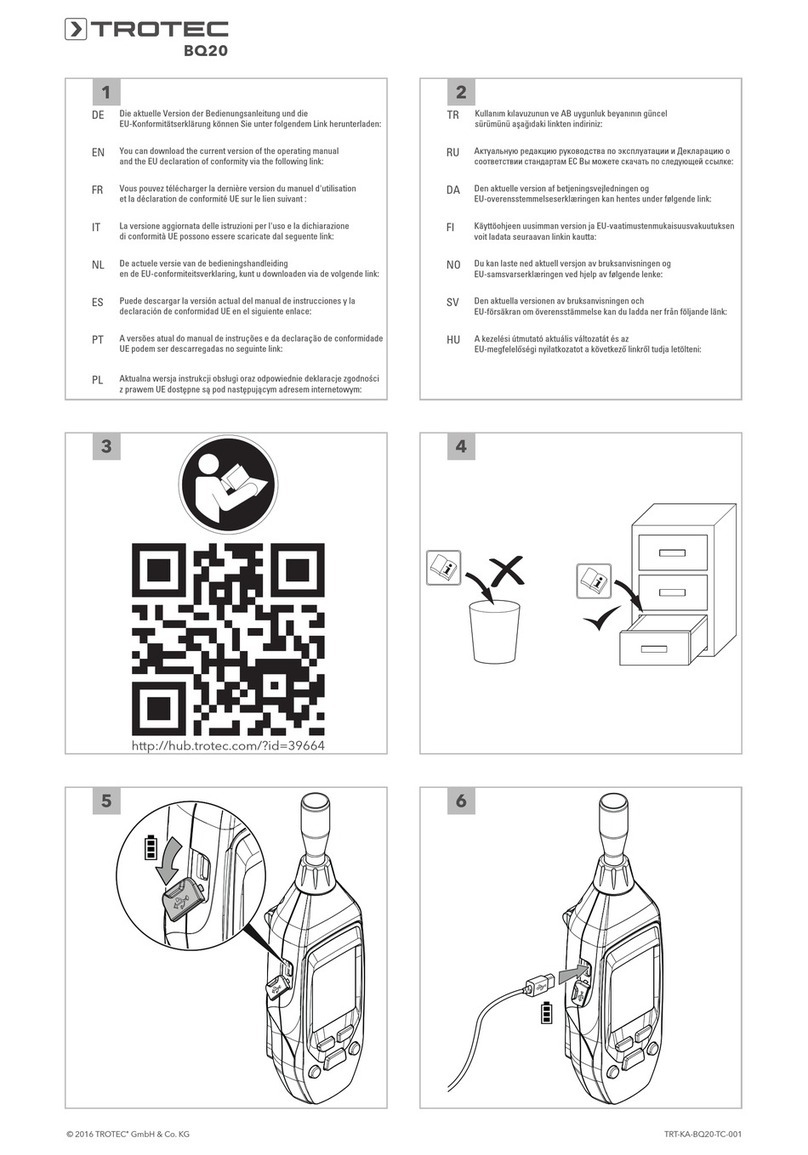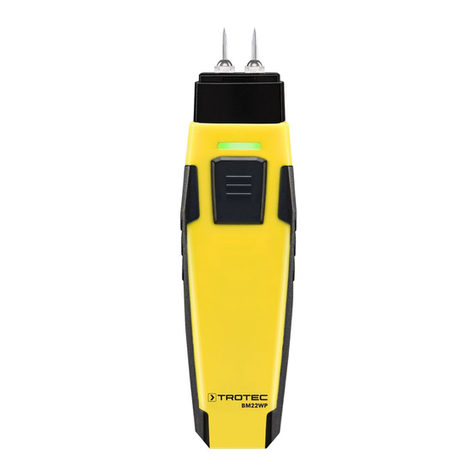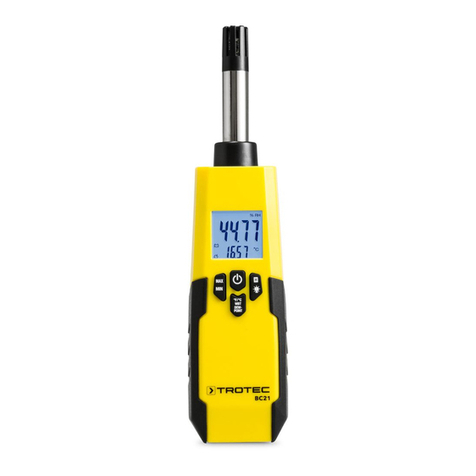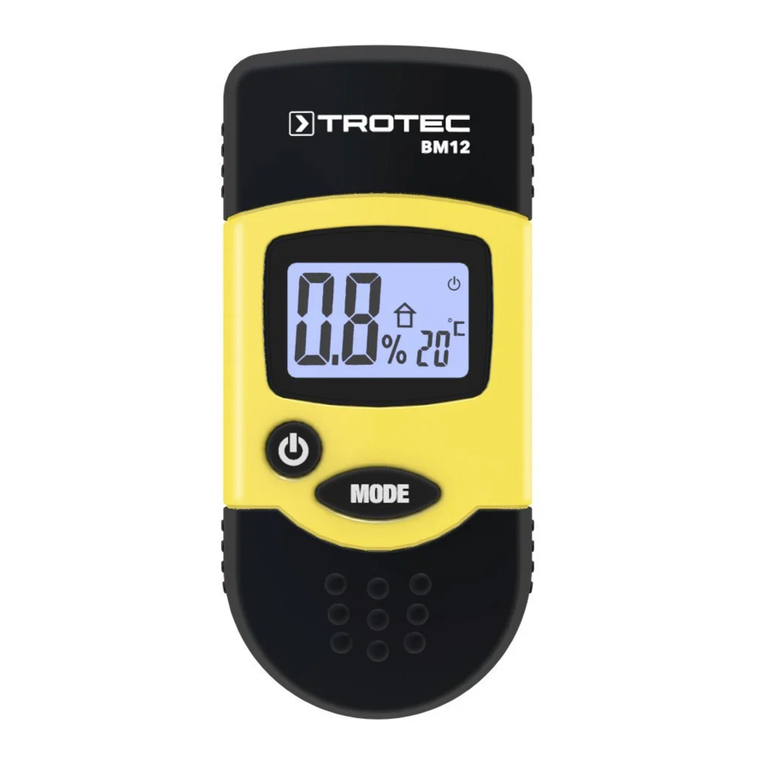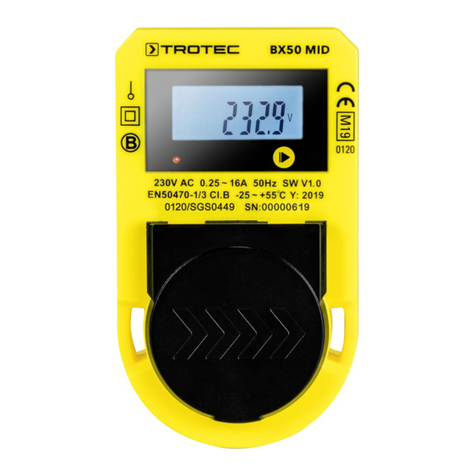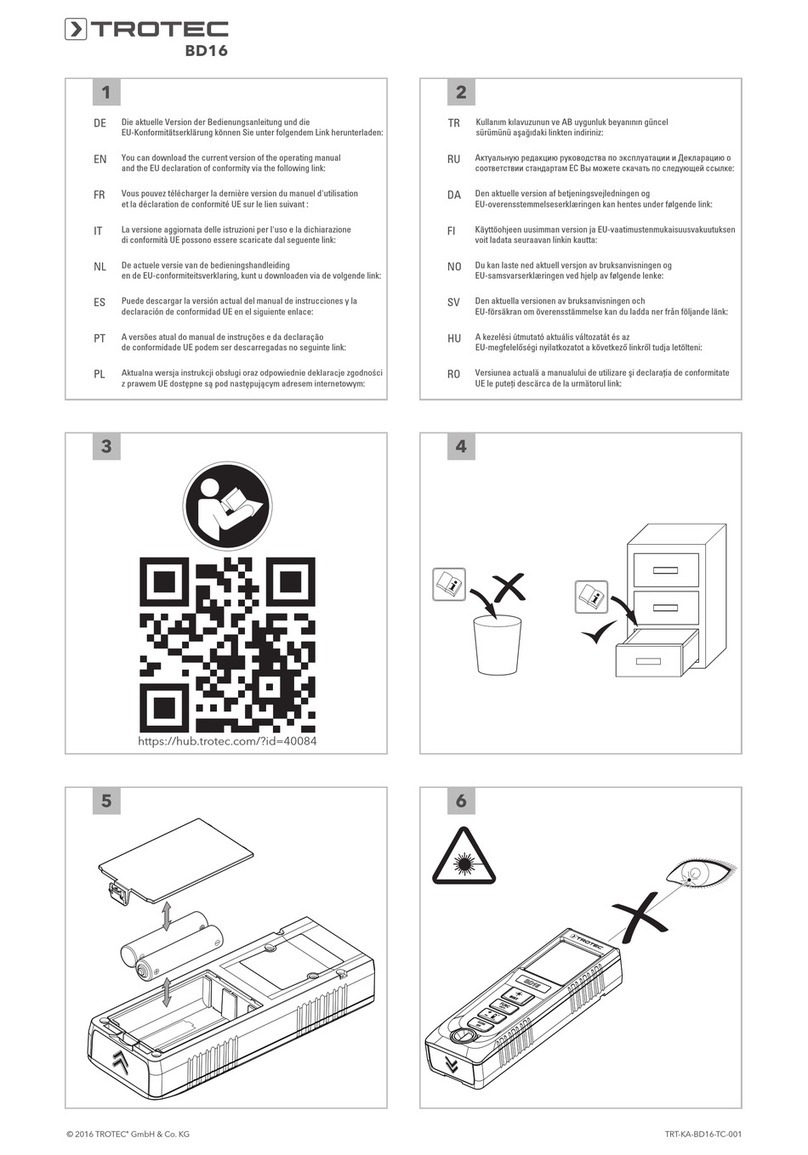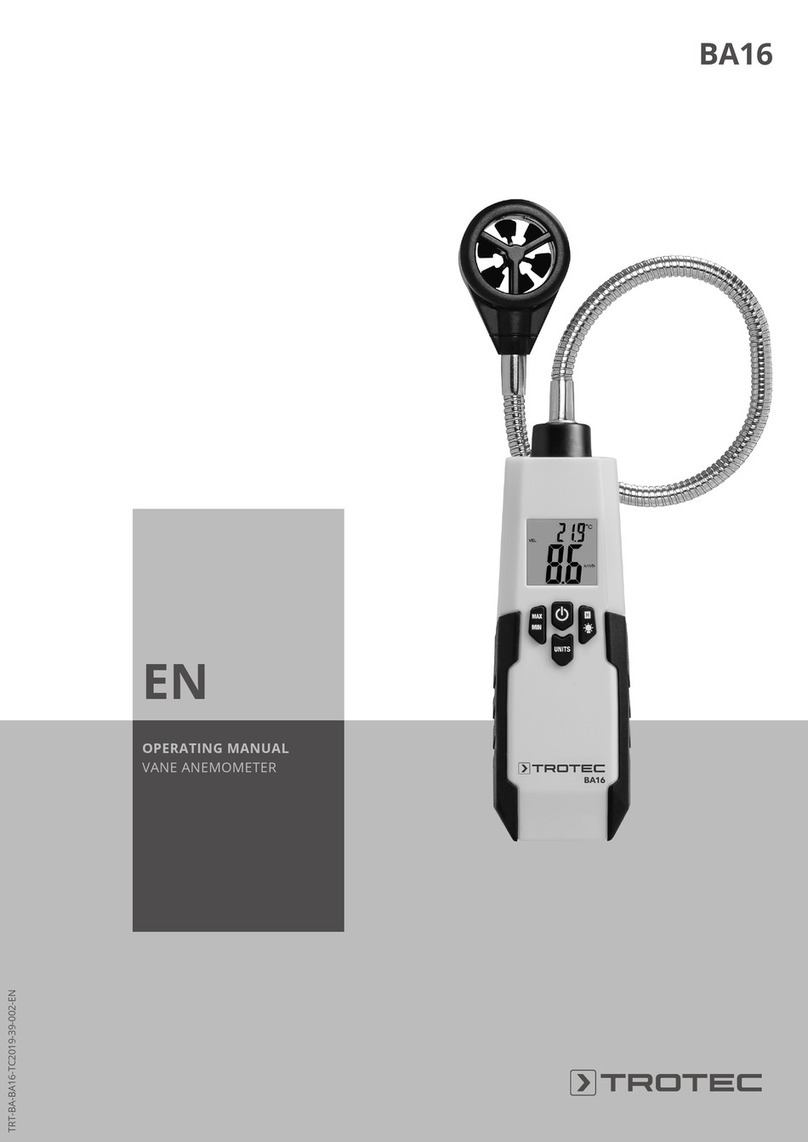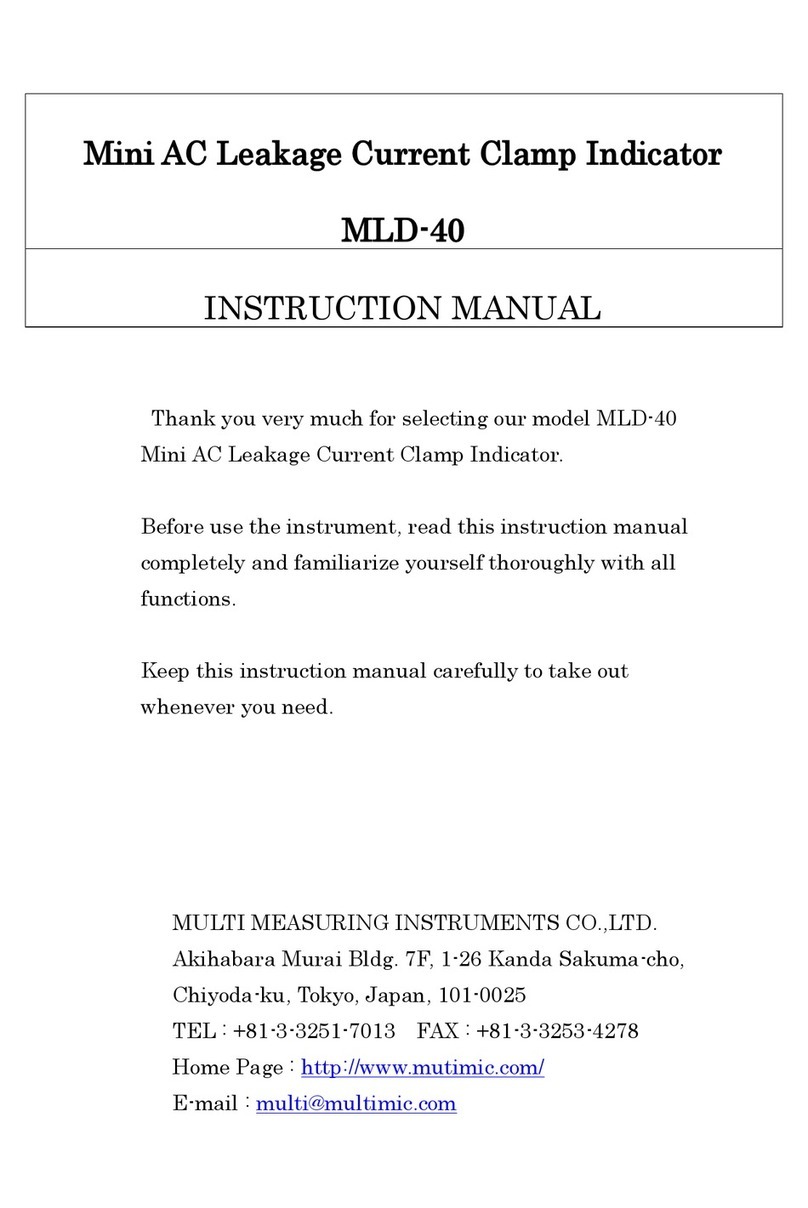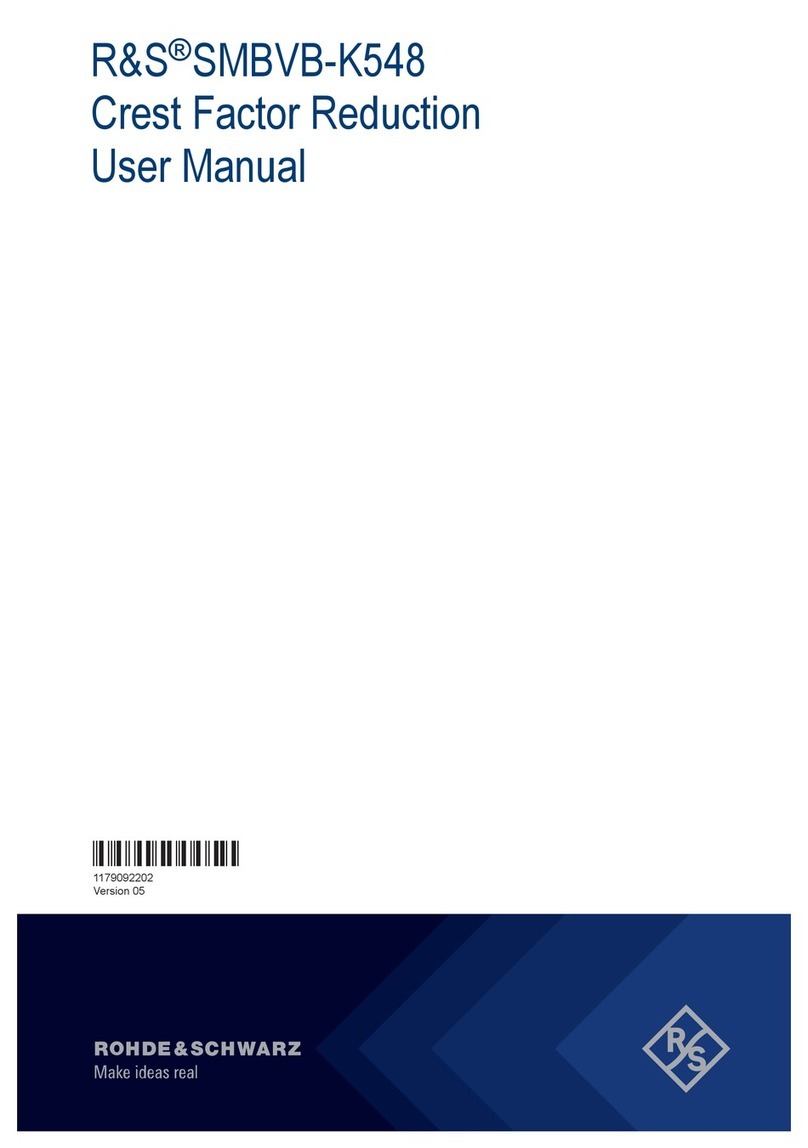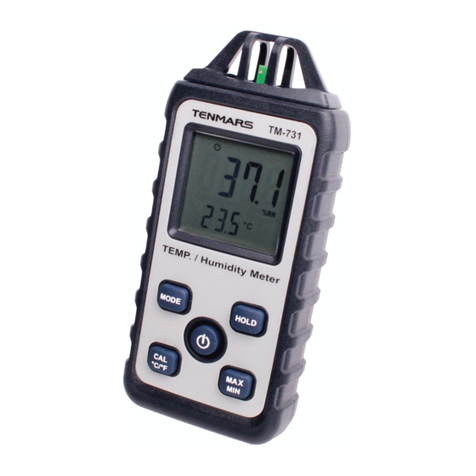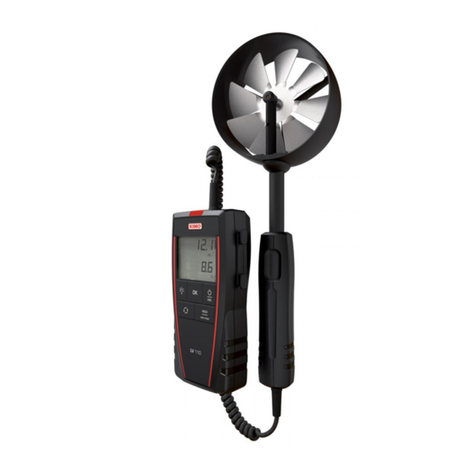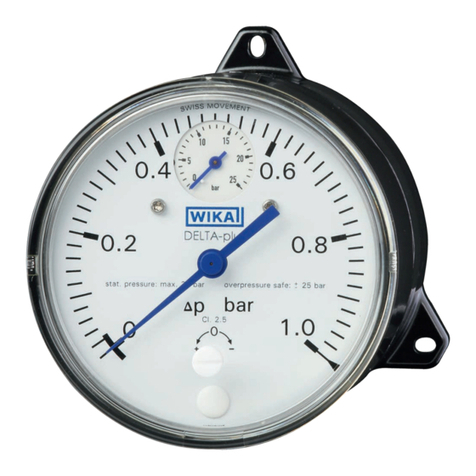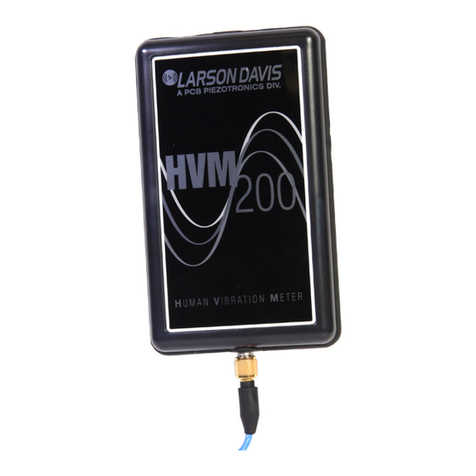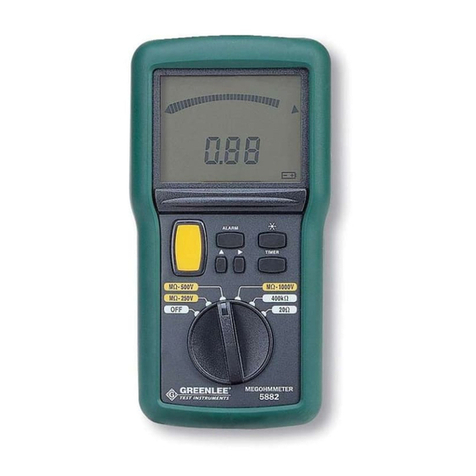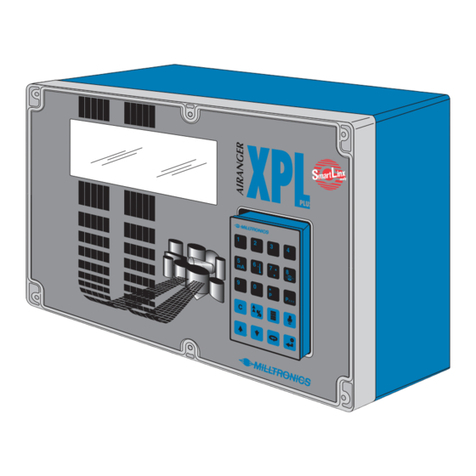Trotec LD6000 PTS User manual

TRT-BA-LD6000PTS50M/LD6000PTS80M/LD6000PTS100M/LD6000PTS150M-TC221028TTRT02-001-EN
LD6000PTS 50M / LD6000PTS 80M / LD6000PTS 100M / LD6000PTS 150M
EN
ORIGINAL INSTRUCTIONS
ACOUSTIC TUBE PROBE

2 EN
Acoustic tube probe LD6000PTS 50m / LD6000PTS 80m / LD6000PTS 100m / LD6000PTS 150m
Table of contents
Notes regarding the instructions .........................................2
Safety .....................................................................................2
Information about the device................................................4
Transport and storage...........................................................7
Start-up..................................................................................8
Operation ...............................................................................8
Maintenance and repair ......................................................13
Errors and faults..................................................................13
Disposal ...............................................................................14
Declaration of conformity ...................................................15
Notes regarding the instructions
Symbols
Warning of electrical voltage
This symbol indicates dangers to the life and health of
persons due to electrical voltage.
Warning of explosive substances
This symbol indicates dangers to the life and health of
persons due to potentially explosive substances.
Warning
This signal word indicates a hazard with an average
risk level which, if not avoided, can result in serious
injury or death.
Caution
This signal word indicates a hazard with a low risk
level which, if not avoided, can result in minor or
moderate injury.
Note
This signal word indicates important information (e.g.
material damage), but does not indicate hazards.
Info
Information marked with this symbol helps you to carry
out your tasks quickly and safely.
Follow the manual
Information marked with this symbol indicates that the
instructions must be observed.
Wear protective gloves
Information marked with this symbol indicates that you
should wear protective gloves.
You can download the current version of the instructions and
the EUdeclaration of conformity via the following link:
LD6000PTS 50m
LD6000PTS 80m
LD6000PTS 100m
LD6000PTS 150m
https://hub.trotec.com/?id=47047
Safety
Read this manual carefully before starting or using the
device. Always store the manual in the immediate vicinity
of the device or its site of use.
Warning
Read all safety warnings and all instructions.
Failure to follow the warnings and instructions may
result in electric shock, fire and/or serious injury.
Save all warnings and instructions for future
reference.
• Do not use the device in potentially explosive rooms or
areas and do not install it there.
• Do not use the device in aggressive atmosphere.
• Do not immerse the device in water. Do not allow liquids to
penetrate into the device.
• Protect the device from permanent direct sunlight.
• Do not remove any safety signs, stickers or labels from the
device. Keep all safety signs, stickers and labels in legible
condition.
• Do not open the device.
• Never charge batteries that cannot be recharged.
• Different types of batteries and new and used batteries
must not be used together.
• Insert the batteries into the battery compartment according
to the correct polarity.
• Remove discharged batteries from the device. Batteries
contain materials hazardous to the environment. Dispose
of the batteries according to the national regulations.
• Remove the batteries from the device if you will not be
using the device for a longer period of time.
• Never short-circuit the supply terminal in the battery
compartment!

EN 3
Acoustic tube probe LD6000PTS 50m / LD6000PTS 80m / LD6000PTS 100m / LD6000PTS 150m
• Do not swallow batteries! If a battery is swallowed, it can
cause severe internal burns within2hours! These burns
can lead to death!
• If you think batteries might have been swallowed or
otherwise entered the body, seek medical attention
immediately!
• Keep new and used batteries and an open battery
compartment away from children.
• Observe the storage and operating conditions (see
Technical data).
Intended use
Only use the device for the non-destructive, acoustic leak
detection in drinking water pipelines and within the measuring
range specified in the technical data.
To use the device for its intended use, only use accessories and
spare parts which have been approved by Trotec.
Foreseeable misuse
Do not use the device in potentially explosive atmospheres or
for measurements at live parts.
The device may only be used for drinking water systems. If used
in other media, reuse for drinking water is prohibited.
Any unauthorised modifications, alterations or structural
changes to the device are forbidden.
Personnel qualifications
People who use this device must:
• have read and understood the instructions, especially the
Safety chapter.
Residual risks
Warning of electrical voltage
There is a risk of a short-circuit due to liquids
penetrating the housing!
Do not immerse the device and the accessories in
water. Make sure that no water or other liquids can
enter the housing.
Warning of electrical voltage
Work on the electrical components must only be
carried out by an authorised specialist company!
Warning
Risk of suffocation!
Do not leave the packaging lying around. Children may
use it as a dangerous toy.
Warning
The device is not a toy and does not belong in the
hands of children.
Warning
Dangers can occur at the device when it is used by
untrained people in an unprofessional or improper way!
Observe the personnel qualifications!
Caution
Keep a sufficient distance from heat sources.
Note
To prevent damages to the device, do not expose it to
extreme temperatures.
Note
Do not use abrasive cleaners or solvents to clean the
device.
Specific instructions for the Bluetooth headset and
Bluetooth receiver
Warning of explosive substances
Do not expose the battery to temperatures above
40°C! Do not let the battery come into contact with
water or fire! Avoid direct sunlight and moisture. There
is a risk of explosion!
Caution
Lithium-ion batteries might catch fire in case of
overheating or damage. Ensure a sufficient distance to
heat sources, do not subject lithium-ion batteries to
direct sunlight and make sure not to damage the
casing. Do not overcharge lithium-ion batteries. If the
battery is not permanently installed in the device, only
use smart chargers that switch off automatically when
the battery is fully charged. Charge lithium-ion
batteries in due time before they are discharged
completely.

4 EN
Acoustic tube probe LD6000PTS 50m / LD6000PTS 80m / LD6000PTS 100m / LD6000PTS 150m
Information about the device
Device description
The devices LD6000PTS 50m, LD6000PTS 80m,
LD6000PTS 100m and LD6000PTS 150m are used for
acoustic leak detection in a pressurized water line, also on
the house connection side. For this purpose, the devices
have a bendable pig probe with integrated precision
microphone and a contactable probe cable.
Leakage sounds can be transmitted to the corresponding
headphones via Bluetooth and rendered audible. The sound
level is displayed analogously on the device.
The exact leakage position can be determined with a
mechanical metre counter.
Using the separately available combination detector LD6000
with Bluetooth receiver LD6000PTS, frequencies can be
visualized and points of leakage can be indicated in form of a
bar graph.
A separate frequency generator (not included in the scope of
delivery) in the 33kHz range allows the entire fibre optic cable
or the probe tip to be contacted. With a suitable receiver, the
pipeline course can be detected and the leakage point located
with pinpoint accuracy.
The devices are suitable, for example, for use on the following
elements of a piping system:
• domestic water meter
• free-flow valve
• dismantled piping
• tapping saddle
• hydrant
The images in these instructions show the device
LD6000PTS 50m by way of example.
Device depiction
LD6000PTS tube probe
1
2
3
5
4
6
7
No. Designation
1Disinfectant storage container
2Cable passage
3Sensor head
4Bluetooth transmitter unit
5Mechanical metre counter
6Polykat fibreglass
7Tubular steel frame

EN 5
Acoustic tube probe LD6000PTS 50m / LD6000PTS 80m / LD6000PTS 100m / LD6000PTS 150m
Accessory case (optional)
8
9
11
10
12
131415
16
17
18
No. Designation
8Transport case for accessories
9Disinfectant
10 Bluetooth headphones
11 Hose adapter
12 LD6000PTS Bluetooth receiver (optional)
13 Mini USB charging cable
14 Charging adapter 230V socket
15 Charging adapter 12V cigarette lighter
16 Geka coupling 1inch internal thread
17 Geka coupling 1inch external thread
18 Spare 9V battery
Bluetooth transmitter unit
19
20
21
22
23
24
19
No. Designation
19 9mm sockets
for connecting a frequency generator
20 Sound transmission LED
illuminated=sound transmission active
not illuminated=sound transmission muted
21 Multifunction button
22 Level LEDs(ten bars)
indicate the intensity of the sound
23 Battery LED
illuminated=sufficient voltage
flashing slowly=replace battery soon
flashing quickly=replace battery before next
measurement
24 Bluetooth LED
illuminated=connection established
flashing=device in pairing mode
not illuminated=no connection established, last active
connection is paired

6 EN
Acoustic tube probe LD6000PTS 50m / LD6000PTS 80m / LD6000PTS 100m / LD6000PTS 150m
Technical data
Parameter Value
Model LD6000PTS 50m LD6000PTS 80m LD6000PTS 100m LD6000PTS 150m
Interfaces Bluetooth
banana plug
Bluetooth
banana plug
Bluetooth
banana plug
Bluetooth
banana plug
Detection depth max. 3.5m max. 3.5m max. 3.5m max. 3.5m
Operating conditions 0–80°C 0–80°C 0–80°C 0–80°C
Operating time >12h >12h >12h >12h
Dimensions
(lengthx widthx height)
160 x 400x 569mm 160 x 400x 569mm 380 x 780x 830mm 380 x 780x 830mm
Weight 17kg 22kg 27kg 37kg
Sensor
Antenna integrated integrated integrated integrated
Frequency range 10–16,000Hz 10–16,000Hz 10–16,000Hz 10–16,000Hz
Protection type IP68 IP68 IP68 IP68
Diameter 12 mm 12 mm 20 mm 20 mm
Length 90 mm 120 mm 140 mm 140 mm
Bending radius min. 40 mm min. 60 mm min. 100 mm min. 100 mm
Fibre optic cable and reel
Cable 4.5 mm Polykat
fibreglass
4.5 mm Polykat
fibreglass
9 mm Polykat
fibreglass
9 mm Polykat
fibreglass
Bending radius min. 100 mm min. 100 mm min. 240 mm min. 240 mm
Max. length 50 m 80 m 100 m 150 m
Breaking load 40kN 40kN 40kN 40kN
Passage
Max. pressure 16bar 16bar 10bar 10bar
Bluetooth transmitter unit
Level indication LED bar graph, 10levels
Protection type IP66
Battery 9V
Bluetooth 2.0 / class2 / 2.4GHz / +1.5dBm (1.14mW)
Range 10 m

EN 7
Acoustic tube probe LD6000PTS 50m / LD6000PTS 80m / LD6000PTS 100m / LD6000PTS 150m
Accessories for all models:
Parameter Value
Bluetooth headphones
Battery Li-ion battery
Operating time 8h
Bluetooth 2.0 / class2 / 2.4GHz
Range 10 m
Bluetooth receiver (optional)
Battery Li-ion battery
Operating time 6h
Bluetooth 2.0 / class2 / 2.4GHz
Range 10 m
Bluetooth speaker (optional)
Battery Li-ion battery
Operating time 8h
Bluetooth 2.0 / class2 / 2.4GHz
Range 10 m
Scope of delivery
• 1x Measuring device LD6000PTS
• 1x Pressure lock with Geka coupling (approved for use in
drinking water systems)
• 1x Bluetooth headphones
• 1x Charging cable for headphones
• 1x Quick guide
Additionally available accessories
• LD6000PTS Bluetooth receiver
• LD6000 combination detector
• LD6000 accessory case
Transport and storage
Note
If you store or transport the device improperly, the
device may be damaged.
Note the information regarding transport and storage of
the device.
Transport
Use the matching transport case to transport the accessories in
order to protect the accessories from external influences.
Before transporting the device, proceed as follows:
• Lock the storage container for the disinfectant in place by
means of the rubber strap provided at the reel.
• Make sure that the device does not suffer any severe
shocks during transport.
The supplied Li-ion batteries are subjects to the requirements of
dangerous goods legislation.
Observe the following when transporting or shipping Li-ion
batteries:
• The user may transport the batteries by road without any
additional requirements.
• If transport is carried out by third parties (e.g. air transport
or forwarding company), special requirements as to
packaging and labelling must be observed. This includes
consulting a dangerous goods specialist when preparing
the package.
– Only ship batteries if their housing is undamaged.
– Please also observe any other national regulations.
Storage
When the device is not being used, observe the following
storage conditions:
• dry and protected from frost and heat
• protected from dust and direct sunlight
• the storage temperature complies with the values specified
in the Technical data
• Batteries are removed from the device
• Always store the disinfectant in an upright position (lid
facing up).

8 EN
Acoustic tube probe LD6000PTS 50m / LD6000PTS 80m / LD6000PTS 100m / LD6000PTS 150m
Start-up
Inserting the batteries into the transmitter unit
Note
Make sure that the surface of the device is dry and the
device is switched off.
1. Remove the battery compartment cover from the
transmitter unit.
2. Use the battery clip to connect the new battery with correct
polarity.
3. Slide the battery compartment cover back on the
transmitter unit.
Disinfecting the device
Caution
The disinfectant is a neutral, liquid cleaning agent
based on specially stabilized 3% hydrogen peroxide.
Always wear suitable protective gloves when filling the
storage container or the spray bottle.
Note
Before usage, all device parts coming into contact with
drinking water must be disinfected.
When inserting the fibre optic cable into the pipeline, it is
continuously pulled through the disinfectant solution. There is
no need to observe a specific exposure time during insertion.
The agent is pHneutral and can be fed into the waste water
system without prior neutralization after use.
1. Spray the sensor head(3) with the disinfectant(9) and
leave it to act for approx.5minutes.
2. Fill the storage container(1) to approx.¼ with disinfectant.
1/4
1/4
3. During measurement, position the storage container(1)
vertically upwards to enable a continued flow of
disinfectant.
Operation
Switching the device on
1. Press the multifunction button(21) for 3seconds.
ðThe transmitter unit switches on.
Establishing a Bluetooth connection
In order to transmit the sound recorded by the sensor head, a
Bluetooth connection has to be established between the
transmitter unit and the headphones/Bluetooth receiver/
speaker.
6 Sec.

EN 9
Acoustic tube probe LD6000PTS 50m / LD6000PTS 80m / LD6000PTS 100m / LD6000PTS 150m
Bluetooth transmitter
Bluetooth setting Operation LED display
Re-establish last
Bluetooth
connection
Switch on
transmitter
(Press multifunction
button(21) for
3seconds)
BluetoothLED(24)
inactive
Switch Bluetooth
into pairing mode
Press multifunction
button(21) for
6seconds while
switched off
All LevelLEDs(22)
light up,
BluetoothLED(24)
flashes
Establishing
connection
Wait for other end Blue LED on
receiver unit flashes
Bluetooth
connection is
established
BluetoothLED(24)
constantly
illuminated
Connection error All LevelLEDs(22)
flash
Bluetooth headphones
Bluetooth setting Operation LED display
Re-establish last
Bluetooth
connection
Switch on
headphones(10)
(Press On/Offbutton
for 5seconds)
Blue LED on
headphones flashes
briefly and then
lights up
continuously
Switch Bluetooth
into pairing mode
Switch on
headphones(10)
(Press On/Offbutton
for 7seconds)
Blue LED flashes
quickly
Bluetooth
connection is
established
A brief acoustic
signal sounds in
headphones, blue
LED on headphones
lights up
continuously
No connection Blue LED on
headphones flashes
quickly
Bluetooth receiver for LD6000 (optional)
Bluetooth setting Operation LED display
Re-establish last
Bluetooth
connection
Switch on Bluetooth
receiver(12)
(Press On/Offbutton
for 4seconds)
Blue LED on
Bluetooth receiver
flashes
Switch Bluetooth
into pairing mode
Press On/Offbutton
on Bluetooth
receiver(12) for
7seconds while
switched off
Blue and red LED on
Bluetooth receiver
flash quickly
alternately
Establishing
connection
Wait for other end Blue and red LED on
Bluetooth receiver
flash quickly
alternately
Bluetooth
connection is
established
Blue LED on
Bluetooth receiver
flashes slowly
No connection Blue LED on
Bluetooth receiver
flashes quickly
Bluetooth speaker (optional)
Bluetooth setting Operation LED display
Re-establish last
Bluetooth
connection
Switch on speaker
(Press On/Offbutton
for 4seconds)
Power LED on
speaker illuminated
Switch Bluetooth
into pairing mode
Switch on speaker
Briefly press
Bluetooth button on
speaker
Bluetooth LED on
speaker flashes
quickly
Establishing
connection
Wait for other end Bluetooth LED on
speaker flashes
quickly
Bluetooth
connection is
established
Bluetooth LED on
speaker illuminated
No connection Bluetooth LED on
speaker flashes
slowly

10 EN
Acoustic tube probe LD6000PTS 50m / LD6000PTS 80m / LD6000PTS 100m / LD6000PTS 150m
Connecting the cable passage
The cable passage(2) is connected for a smooth insertion of the
flexible sensor head(3) in the drinking water line. The passage
comes with a Geka coupling approved for use in drinking water
systems.
1. Close the shut-off valve of the water line.
2. Prepare the end of the pipe section to be examined with a
supplied Gekacoupling(16, 17).
ðConnect preferably straight pieces or branches of 45° to
avoid the sensor head from getting caught during
insertion(3).
3. If the distance between the attached Gekacoupling and
the next shut-off valve is too small, use the optional hose
adapter(11) to connect the cable passage.
11
4. Connect the Gekacoupling to the cable passage(2).
ðMake sure that the storage container with the
disinfectant(1) is positioned vertically upwards.
1
2
Inserting the sensor head
Note
In case of DN50pipes, the fibre optic cable can be
pushed around bends of 90°. Despite this flexibility,
please proceed with extreme caution during any
application with 90°bends due to the high breaking
load.
Info
The sound recorder is very sensitive and records even
barely perceptible sounds. Nevertheless, despite this
sensitivity, it cannot be excluded that a leak is not
recognized under certain conditions. This might either
be due to the fact that the leak causes no leakage
noise or else the sensor head(3) no longer works
correctly. Therefore, check the sensor head prior to
every measurement by running your fingernail over the
tip.
Info
In the course of the insertion process, a very loud
scratching noise can be heard in the headphones/
speaker, which is caused by the pushing. You can
mute the sound using the multifunction button(21).
1. Before opening the shut-off valve, make sure that all
connections have been made correctly. Then slowly open
the shut-off valve.
2. Carefully slide the sensor head(3) into the pipe through the
connected cable passage(2).
3 2

EN 11
Acoustic tube probe LD6000PTS 50m / LD6000PTS 80m / LD6000PTS 100m / LD6000PTS 150m
3. Push the fibre optic cable(6) further into the pipe in
increments of 30 to 50cm. Allow the sensor head(3) to
come to a rest at the end of each step in order to record
the sounds in the environment of the sensor head.
4. If the sensor head(3) gets stuck inside the pipe, try to
loosen it by carefully pushing it back and forth.
Acoustic leak detection with Bluetooth headphones
In the case of leak detection in connection with the Bluetooth
headphones, the noisiest spot in the defective pipe is the search
target. We proceed on the assumption that every leak brings
about a leakage noise. The closer you get to the fault location,
the more sound energy will be recorded by the sensor head(3),
which results in a perceptible increase in volume. At the same
time a shift in the pitch to higher frequencies will be audible.
1. Push the sensor head(3) into the pipe until you have
located the spot with the loudest noise and the highest
pitch.
2. For fine tuning, push and pull the sensor head(3) past the
spot you have just determined for a number of times.
ðThere is a leakage at the defined spot.
Acoustic leak detection with level indicator
Info
The integrated level indicator is for orientation
purposes only. A leaking sound does not necessarily
cause a full-scale deflection of the LevelLED(22).
1. Gradually push the sensor head(3) into the pipe.
ðThe more of the LevelLEDs(22) light up, the closer the
sensor head(3) is to the leakage.
Acoustic leak detection with Bluetooth receiver and
LD6000combination detector
Info
By use of the LD6000combination detector,
frequencies up to 4000Hz can be visualized.
The best results with the LD6000combination detector
can be achieved in the user-defined application in
smart mode as well as in non-stop measuring mode.
For detailed information on measuring with the
LD6000, see the separate LD6000manual.
The LD6000combination detector is not included in the scope
of delivery and is available as an option.
1. Connect the headphones to the LD6000combination
detector.
2. Connect the Bluetooth receiver(12) to the
LD6000combination detector.
3. Gradually push the sensor head(3) into the pipe.
ðThe larger the numeric display of the
LD6000combination detector and the higher the
pitch(see lower frequency-response diagram of the
LD6000combination detector), the closer the sensor
head(3) is to the leakage.
LD600 0 PTS

12 EN
Acoustic tube probe LD6000PTS 50m / LD6000PTS 80m / LD6000PTS 100m / LD6000PTS 150m
Pipe and pinpoint location with a locating device
Note
The search pig at the tip of the probe is optimized for
use with 33kHz. Other common frequencies can only
be used to a limited extent or not at all. Use a suitable
frequency generator.
Note
For pipe and pinpoint location, you need a
commercially available locating device, which consists
of a generator(transmitter) and a receiver as standard.
The locating device is not included in the scope of delivery.
1. Carry out an acoustic leak detection.
2. Leave the sensor head(3) at the position where you have
determined the maximum level.
3. Connect the frequency generator of the locating device to
the device.
ðProbe detection
Connect one of the 9mm sockets(19) to the frequency
generator and insert an earth spike into the ground to
which you connect the other socket of the frequency
generator in order to track the course of the inserted
fibre optic cable.
33 kHz
ðPinpoint location
Connect both 9mm sockets(19) to the frequency
generator to contact the search pig at the tip of the
probe and to determine the exact position of the search
pig.
33 kHz
33 kHz
Pipe and pinpoint location with the measuring wheel
1. Carry out an acoustic leak detection.
2. Leave the fibre optic cable at the position where you have
determined the maximum level.
3. Read the uncoiled length from the mechanical metre
counter(5) and write down the determined value.
2 m
4. Walk down the corresponding length along the pipeline
course with a measuring wheel.
ðThe sensor head is located at the position in the pipe
where the indication of the measuring wheel
corresponds to that of the mechanical metre counter(5).
2 m
Enabling/disabling sound transmission
üThe transmitter unit is switched on.
üA Bluetooth connection is established.
1. Briefly press the multifunction button(21).
ðThe Sound transmissionLED(20) is illuminated.
ðSound transmission is enabled.
2. Briefly press the multifunction button(21) again.
ðThe Sound transmissionLED(20) is no longer
illuminated.
ðSound transmission is muted.
Switching the device off
1. Press the multifunction button(21) for 3seconds.
ðAll LevelLEDs(22) light up.
ðThe transmitter unit switches off as soon as you release
the multifunction button(21).

EN 13
Acoustic tube probe LD6000PTS 50m / LD6000PTS 80m / LD6000PTS 100m / LD6000PTS 150m
Examples of application
The following application examples show possibilities for
connecting the device to special elements of the piping system.
Insertion via domestic water meter
1. Shut off the water supply.
2. Disassemble the water meter.
3. Mount the Geka coupling.
4. Attach the hose adapter (optional).
5. Connect the cable passage.
6. Open the water supply again.
7. Insert the probe into the pipe.
Insertion via free-flow valve
1. Shut off the water supply.
2. Disassemble the free-flow valve.
3. Fit the Geka coupling.
4. Attach the hose adapter (optional).
5. Connect the cable passage.
6. Open the water supply again.
7. Insert the probe into the pipe.
Insertion via detached pipe
1. Take the pipeline out of service.
2. Disassemble the pipeline.
3. Attach the matching adapter with Geka coupling.
4. Connect the cable passage.
5. Put the pipeline back into service.
6. Insert the probe into the pipeline.
Insertion via hydrant
1. Attach the adapter for hydrants with Geka coupling.
2. Connect the cable passage.
3. Fully open the hydrant.
4. Insert the probe into the hydrant.
Insertion via tapping saddle
1. Tap the pipeline with a 45°tapping saddle.
2. Attach the Geka coupling to the tapping saddle.
3. Connect the cable passage.
4. Open the tapping saddle completely.
5. Insert the probe into the pipeline.
Maintenance and repair
Battery change
The batteries of the transmitter unit must be changed when the
BatteryLED(23) flashes quickly or when the device can no
longer be switched on (see chapter Inserting the battery).
Charging the battery
The battery of the Bluetooth headphones(10) should be
recharged when the battery is low. To do so, connect the
supplied charging cable to the device and to the mains.
Cleaning
Do not use any sharp objects or aggressive chemicals to clean
the device.
Clean the Bluetooth transmitter with a soft, damp and lint-free
cloth. Make sure that no moisture enters the housing. Do not
use any sprays, solvents, alcohol-based cleaning agents or
abrasive cleaners, but only clean water to moisten the cloth.
Repair
Do not modify the device or install any spare parts. For repairs
or device testing, contact the manufacturer.
Errors and faults
The device has been checked for proper functioning several
times during production. If malfunctions occur nonetheless,
check the device according to the following list.
The transmitter unit does not establish a Bluetooth
connection to the headphones/Bluetooth receiver/speaker:
• Make sure that the headphones/Bluetooth receiver/speaker
is/are switched on.
• The headphones/Bluetooth receiver/speaker may already
be paired with another transmitter. Repeat pairing.
Pairing may not have been performed correctly. Repeat
pairing.
Transmitter unit and headphones/Bluetooth receiver/
speaker cannot find each other in pairing mode:
• Make sure that the transmitter unit and the headphones/
Bluetooth receiver/speaker are in pairing mode. Wait a few
seconds for the two devices to connect.
• Make sure that the transmitter unit and headphones/
Bluetooth receiver/speaker are not too far apart. Observe
the maximum range (see Technical data).
The level indicator of the transmitter unit flashes in pairing
mode:
• An error has occurred in pairing mode. Switch the
transmitter unit off and back on. Repeat pairing.

14 EN
Acoustic tube probe LD6000PTS 50m / LD6000PTS 80m / LD6000PTS 100m / LD6000PTS 150m
The Bluetooth connection between the transmitter unit and
the headphones/Bluetooth receiver/speaker is lost during
operation:
• Make sure that the transmitter unit and headphones/
Bluetooth receiver/speaker are not too far apart. Observe
the maximum range (see Technical data).
• The batteries of the transmitter unit or the battery of the
headphones/Bluetooth receiver/speaker may be too weak.
Change the battery of the transmitter unit or charge the
battery of the headphones/Bluetooth receiver/speaker.
• The transmitter unit or the headphones/Bluetooth receiver/
speaker have switched off for no reason. Switch the device
back on.
The transmitter unit can no longer be switched on or off:
• There is a software error. Briefly disconnect and reconnect
the battery of the transmitter unit.
The Bluetooth connection between transmitter unit and
headphones/Bluetooth receiver/speaker is established
correctly, but no sound can be heard:
• Muting of the transmitter unit may be active. Briefly press
the multifunction button (the Sound transmissionLED(20)
is illuminated).
• The fibre optic cable may have been damaged or is visibly
kinked (cable break). Have the device repaired by
authorised expert staff or by Trotec.
• The sensor head may have been damaged or torn off. Have
the device repaired by authorised expert staff or by Trotec.
Fibre optic cable/probe head location is not possible:
• Make sure that the frequency generator is correctly
connected to the transmitter unit.
• The pipe may be located too deep in the ground or
underneath a sealed surface with metal. In this case,
location is not possible.
• The fibre optic cable may have been damaged or is visibly
kinked (cable break). Have the device repaired by
authorised expert staff or by Trotec.
Disposal
Always dispose of packing materials in an environmentally
friendly manner and in accordance with the applicable local
disposal regulations.
The icon with the crossed-out waste bin on waste
electrical or electronic equipment is taken from Directive
2012/19/EU. It states that this device must not be disposed of
with the household waste at the end of its life. You will find
collection points for free return of waste electrical and electronic
equipment in your vicinity. The addresses can be obtained from
your municipality or local administration. You can also find out
about other return options that apply for many EU countries on
the website https://hub.trotec.com/?id=45090. Otherwise,
please contact an official recycling centre for electronic and
electrical equipment authorised for your country.
The separate collection of waste electrical and electronic
equipment aims to enable the re-use, recycling and other forms
of recovery of waste equipment as well as to prevent negative
effects for the environment and human health caused by the
disposal of hazardous substances potentially contained in the
equipment.
Li-Ion
In the European Union, batteries and accumulators must
not be treated as domestic waste, but must be disposed of
professionally in accordance with Directive 2006/66/EC of the
European Parliament and of the Council of 6September2006
on batteries and accumulators. Please dispose of batteries and
accumulators according to the relevant legal requirements.
Only for United Kingdom
According to Waste Electrical and Electronic Equipment
Regulations 2013 (SI2013/3113) (as amended) and the Waste
Batteries and Accumulators Regulations 2009 (SI2009/890) (as
amended), devices that are no longer usable must be collected
separately and disposed of in an environmentally friendly
manner.

EN 15
Acoustic tube probe LD6000PTS 50m / LD6000PTS 80m / LD6000PTS 100m / LD6000PTS 150m
Declaration of conformity
We– Trotec GmbH– declare in sole responsibility that the
product designated below was developed, constructed and
produced in compliance with the requirements of the EU Radio
Equipment Directive in the version 2014/53/EU.
Product model/ product: LD6000PTS 50m,
LD6000PTS 80m,
LD6000PTS 100m,
LD6000PTS 150m
Product type: Acoustic tube probe
Year of manufacture as of: 2022
Relevant EUdirectives:
• 2011/65/EU
• 2012/19/EU
• 2014/30/EU
Applied harmonised standards:
• EN 300 328 V2.2.2
• EN 55022:2010/AC:2011
• EN 61000-6-2:2005
• EN 61000-6-4:2007/A1:2011
Applied national standards and technical specifications:
• EN 61000-4-2:2009-12
• EN 61000-4-3:2006/A2:2010-07
• EN 61000-4-4:2012
• EN 61000-4-6:2014-08
Manufacturer and name of the authorised representative of
the technical documentation:
Trotec GmbH
Grebbener Straße 7, D-52525 Heinsberg
Phone: +49 2452 962-400
E-mail: [email protected]
Place and date of issue:
Heinsberg, 17.02.2023
Joachim Ludwig, Managing Director

Trotec GmbH
Grebbener Str. 7
D-52525 Heinsberg
+49 2452 962-400
+49 2452 962-200
www.trotec.com
Other manuals for LD6000 PTS
1
This manual suits for next models
3
Table of contents
Other Trotec Measuring Instrument manuals
Popular Measuring Instrument manuals by other brands

PCB Piezotronics
PCB Piezotronics J353B33 Installation and operating manual

REED
REED R7900 instruction manual
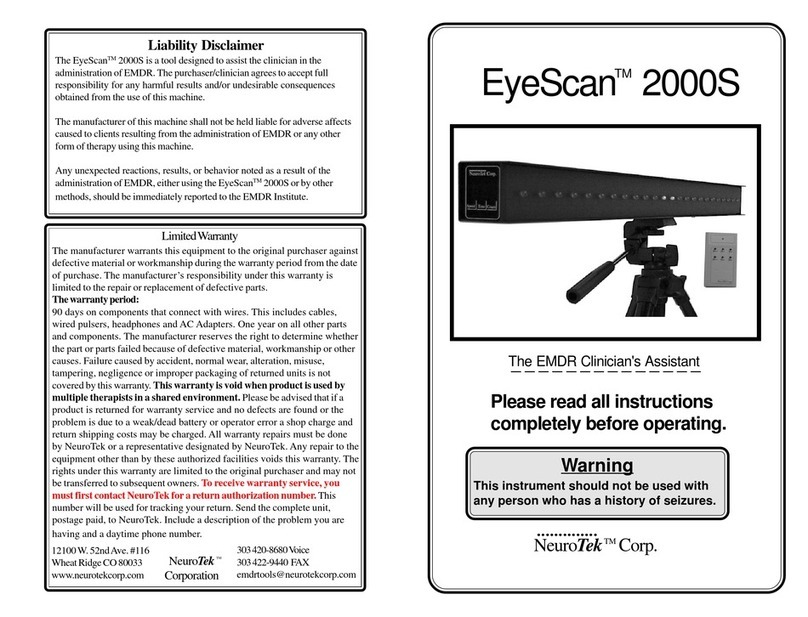
NeuroTek
NeuroTek EyeScan 2000S operating instructions
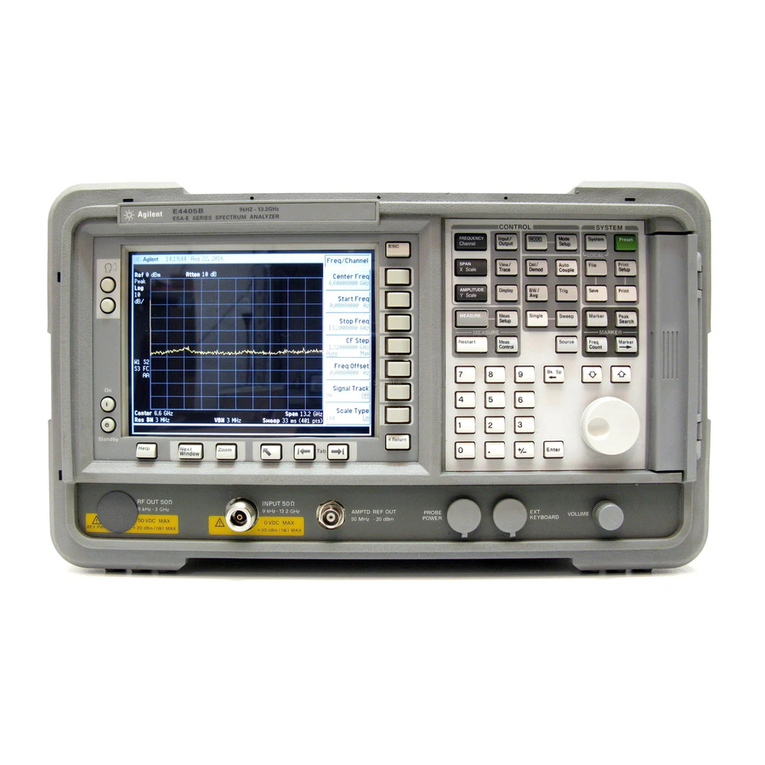
Agilent Technologies
Agilent Technologies ESA-E Series Measurement guide

ATEQ
ATEQ Huf VT46-HUF user guide
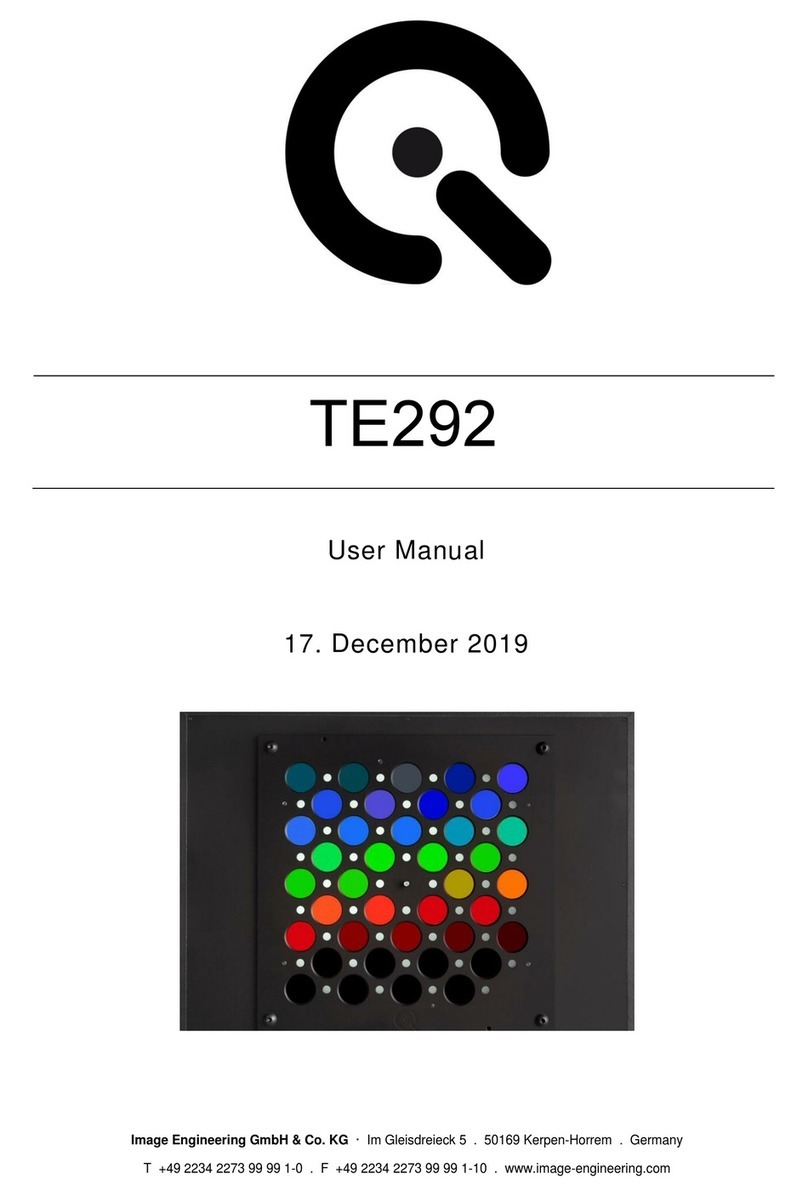
Image Engineering
Image Engineering TE292 user manual
